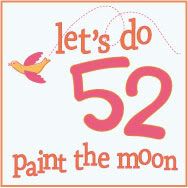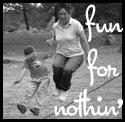I wanted to share a recent creation. I took several ideas I've seen floating around (mostly on Pinterest) and combined them to create these little gems:
I had fun playing with my new (and first) die sets. Above, I've shown just a few of my favorite configurations of the team name, number, and player name. For the players, we (Jack helped with this part) attached satin cord as an adjustable length necklace. For the coaches, I just attached reclaimed handles from discarded paper bags (I love finding new uses for the gift and shopping bag handles, which I harvest whenever I see one destined for a landfill!) On the pieces for the girls and ladies, I added some layers with glitter and sparkle (look closely at the pieces with the turquoise cording). They are subtle, but in the light, they sparkle ever so nicely!
Here are the posts where I gleaned some of the ideas I used:
Washer Stamping and Filling the Letters with Sharpie
Washer Stamping and Filling
Paper Covered Washers
Painted Washers (I used Spray Paint and Permanent Marker to make the Baseballs, but started out with this as my idea source.)
Slip Knot Necklace (I tied the square knots three times each, because the satin code is so slippery, and I left the ends long to make them easier to grab and pull).
I added my own twist by applying a brush on acrylic in thick layers on the paper and painted surfaces. Next time, I think I will find a two-part resin to layer on this type of item, because even a week after application, the product I used takes a mark when pressed firmly (with a finger nail, or even a rubber band). Though, they are still smooth enough to serve their purpose here.
Oh! One other thing, the knots on the necklaces. I regularly look at JD Lenzen's Fusion Knotwork on his You Tube Channel, Tying it All Together. I wound up watching several of his videos, then creating something that worked well for me. I just looped the satin cording around and around, tying it different ways until I found one I thought was secure and nice to look at.
So. That's it. I used the above links. Played a great deal, and created these fun pieces. Now, to help my (almost) 13 year old niece make a set for her basketball team!
















































